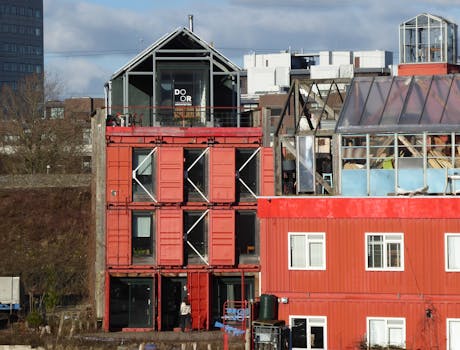
Sustainable Cities: How Europe is Shaping Eco-Friendly Lifestyles by 2025
Sustainable Cities is becoming a major concern for many countries around the world, and Europe is at the forefront of this movement. With the aim of reducing carbon emissions and promoting green living, European cities are implementing innovative solutions and policies that are shaping eco-friendly lifestyles by 2025.
Introduction to Sustainable Cities
Sustainable cities are urban areas that are designed to minimize their impact on the environment, while also providing a high quality of life for their citizens. This can be achieved through a range of measures, including the use of renewable energy, reducing waste and pollution, and promoting sustainable transportation.
In Europe, many cities are taking the lead in sustainable living, with cities such as Copenhagen, Stockholm, and Amsterdam being recognized as among the most sustainable in the world. These cities are implementing a range of initiatives, including green roofs, bike-sharing schemes, and electric vehicle charging points, to reduce their carbon footprint and promote eco-friendly lifestyles.
Europe’s Sustainable City Initiatives
Europe is home to a number of innovative sustainable city initiatives, including:
- Green Roofs: Many European cities are incorporating green roofs into their urban planning, providing insulation, reducing stormwater runoff, and creating habitats for wildlife.
- Bike-Sharing Schemes: Cities such as Paris and London have implemented bike-sharing schemes, providing an affordable and sustainable transportation option for citizens.
- Electric Vehicle Charging Points: Many European cities are installing electric vehicle charging points, making it easier for citizens to switch to sustainable transportation options.
- Renewable Energy: Europe is investing heavily in renewable energy, with many cities generating a significant proportion of their energy from sources such as wind, solar, and hydro power.
Benefits of Sustainable Cities
Sustainable cities offer a range of benefits, including:
- Improved Air Quality: By reducing pollution and promoting sustainable transportation, sustainable cities can improve air quality, leading to better health outcomes for citizens.
- Increased Quality of Life: Sustainable cities can provide a high quality of life for citizens, with access to green spaces, cultural events, and community activities.
- Reduced Carbon Emissions: By promoting sustainable transportation and energy generation, sustainable cities can reduce their carbon footprint, contributing to a more sustainable future.
- Economic Benefits: Sustainable cities can also provide economic benefits, with sustainable industries and initiatives creating new job opportunities and stimulating local economies.
Conclusion
In conclusion, Europe is leading the way in sustainable city development, with many cities implementing innovative solutions and policies to promote eco-friendly lifestyles. By investing in renewable energy, reducing waste and pollution, and promoting sustainable transportation, European cities are shaping a more sustainable future for their citizens. As we look to 2025, it is clear that sustainable cities will play a critical role in reducing carbon emissions and promoting green living.




